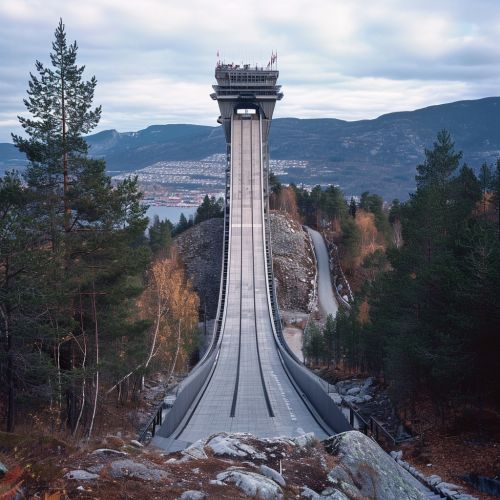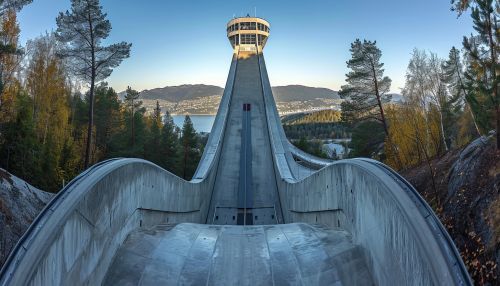Holmenkollen ski jump
History
The Holmenkollen ski jump is a historic and iconic landmark in the world of ski jumping. The first competition in Holmenkollen was held as early as 1892, and the hill has been rebuilt 19 times since. Each reconstruction has increased the hill size, and the current hill record stands at 141.5 meters, set by Anders Jacobsen in 2011.


Design and Construction
The Holmenkollen ski jump is a marvel of engineering and design. The current structure, completed in 2010, was designed by the Danish architectural firm JDS Architects. The design was chosen through an international competition, and the winning concept was praised for its innovative and sustainable design. The ski jump is constructed primarily of steel, and the inrun and outrun are surfaced with porcelain tracks and a plastic landing hill, allowing for year-round use.
Events
Holmenkollen has hosted a number of significant events in ski jumping history. It has been the venue for the FIS Nordic World Ski Championships in 1930, 1966, 1982, and 2011. It has also hosted the Winter Olympics in 1952. The annual Holmenkollen Ski Festival, considered one of the most prestigious events in the sport, attracts top ski jumpers from around the world.
Records and Achievements
Over the years, many records have been set at Holmenkollen. The first recorded jump over 100 meters was achieved here by Sigmund Ruud in 1930. The current hill record is held by Anders Jacobsen, who jumped 141.5 meters in 2011 during the FIS Nordic World Ski Championships.
Impact and Legacy
The Holmenkollen ski jump has had a significant impact on the sport of ski jumping. Its constant evolution and improvement have pushed the boundaries of what is possible in the sport. It has also been a training ground for many of the sport's greatest athletes. The ski jump is a symbol of Norway's rich skiing heritage and continues to inspire future generations of ski jumpers.
